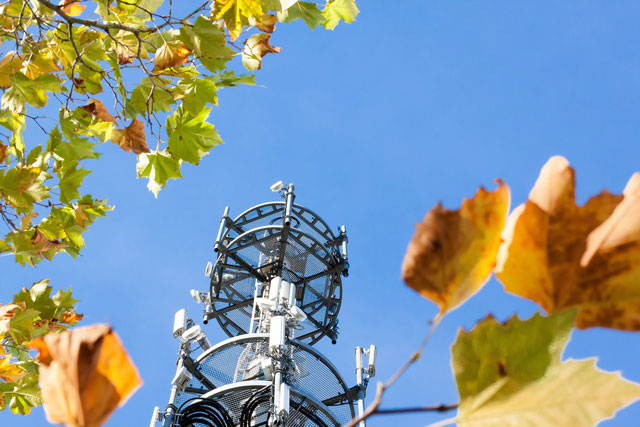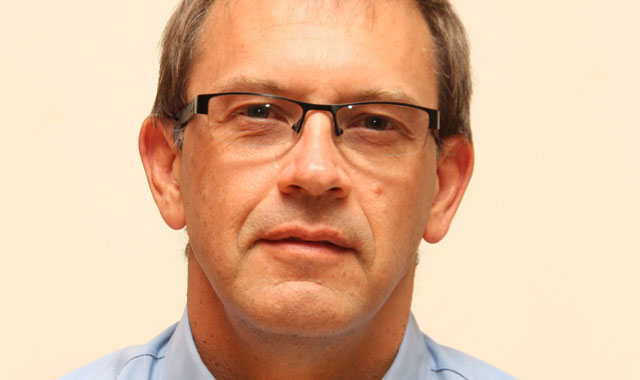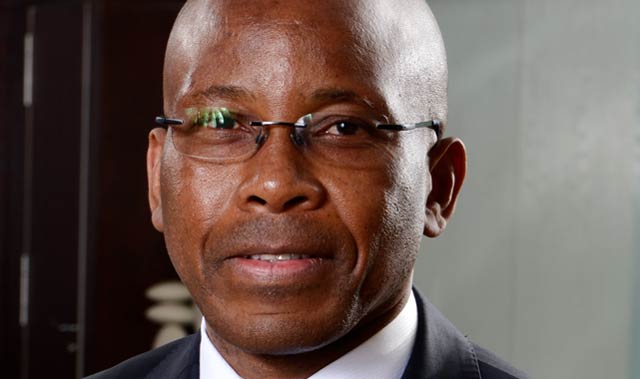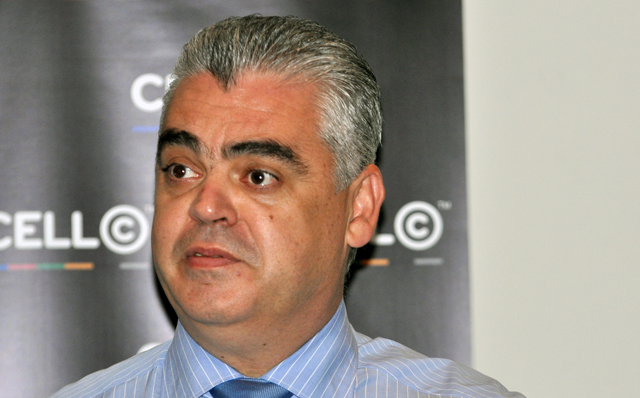
As government drags its heels on formulating a policy on so-called high-demand spectrum — the radio frequencies that can be used to deliver next-generation mobile broadband networks — the country’s three big cellular providers say they could have a dramatic impact on broadband penetration if only they could get access.
Siya Qoza, spokesman for telecommunications & postal services minister Siyabonga Cwele, said last week that the licensing of access to spectrum can only happen after the the integrated national ICT policy white paper has been finalised. The white paper is currently being discussed at cabinet committee level, Qoza said.
Spectrum policy falls under the policy review. “It is hoped that it will be finalised in a manner that ensures that this scarce national resource is allocated such that we achieve national objectives that include ensuring universal access, affordability and transformation,” he said.
The big operators, however, are champing at the bit, saying that with access to spectrum now, they’d be able to deliver robust 4G infrastructure to consumers based on the latest LTE-Advanced system.
“If Vodacom had access to additional spectrum, it would be able to offer LTE-Advanced services to more customers, across the country,” said Vodacom executive head of innovation Jannie van Zyl.
“If we had access to more spectrum, we could easily offer our customers peak download speeds in excess of 100Mbit/s. We would also be able to more easily and cost effectively extend the coverage reach of our existing LTE network if we were able to access sub-1GHz spectrum, which is best suited for wide-area coverage for high-speed mobile broadband services and improved indoor penetration,” Van Zyl told TechCentral.

Operators are particularly keen to get access to spectrum in the so-called “digital dividend” bands below 850MHz that will be vacated when South Africa completes its (long-delayed) transition from analogue to digital terrestrial television. They are also anxiously awaiting news on how the 1,9GHz, 2,3GHz and 2,6GHz bands might be licensed. These bands are well suited to delivering broadband in urban environments where base stations are closer together.
“Considering the low levels of fixed-line penetration in the country, we believe that mobile technology has a leading role in extending broadband access to all South African citizens as well as supporting government’s 2020 Connect ambitions,” said Van Zyl.
“If we are able to access more spectrum for mobile broadband services, this will have an extremely important benefit for all South Africans, as recent studies by the World Bank have shown that a 10% increase in a country’s broadband penetration results in a 0,6 % increase in GDP.”
Currently, even in perfect radio conditions, we would only ever be able to achieve peak downlink throughput speeds of less than 70Mbit/s
Van Zyl said Vodacom — and other operators — ideally need access to two complementary spectrum bands.
“The first would be would be sub-1GHz spectrum, used for blanket coverage purposes. These sub-1GHz spectrum bands — 700MHz, 800MHz and 900MHz — are ideally suited to provide wide-scale coverage due to their superior propagation characteristics in comparison to spectrum bands beyond 1GHz.
“By being able to use sub-1GHz spectrum, we would be able to provide better indoor coverage to our customers and also provide LTE coverage to more customers,” Van Zyl explained.
“Instead of building more base stations to extend current LTE coverage, we would be able to extend our existing LTE coverage reach by [using] sub-1GHz [spectrum] on our existing base stations across the country.”
Congested bands
He said it is difficult for Vodacom to use its existing allocation at 900MHz (where it was originally licensed to provide voice telecoms) for LTE as the band is congested with legacy 2G voice services.
“We have already re-farmed 900MHz spectrum away from 2G, to use it for 3G coverage extension. Further re-farming of our existing 900MHz allocation for LTE is not possible without seriously degrading the 2G and 3G networks which are already using this spectrum,” Van Zyl said. “Ideally, we would like to access the 800MHz (known as the digital dividend 1 spectrum) or the 700MHz (known as the digital dividend 2 spectrum).”
But spectrum at higher frequencies such as 1,9GHz, 2,3GHz and 2,6GHz are also crucial for providing coverage, especially in the cities, he said.
“If [these bands] are licensed to mobile operators, we would be able to quickly put them to use to offer greater speeds to our customers through mobile broadband services such as LTE-A. These capacity bands would be deployed in areas where there is a capacity demand (such as, but not limited to, metros and towns).”
In order to deliver an optimal service, Van Zyl said Vodacom needs at least 2x10MHz of spectrum in a digital dividend band as well as a further 2x10MHz at the higher frequencies.
In the absence of access to this spectrum, Vodacom is deploying its LTE network using the existing access it has in the 1,8GHz band, which it has reallocated away from legacy 2G services.

The maximum Vodacom is able to use at 1,8GHz is 10MHz, as LTE works in carrier multiples of 5MHz and the company has only 12MHz in the band.
“Currently, even in perfect radio conditions, we would only ever be able to achieve peak downlink throughput speeds of less than 70Mbit/s. We cannot roll out LTE-A services, which would give speeds of 100Mbit/s to 150Mbit/s on a wide scale. This is due to the requirement to ‘carrier aggregate’ spectrum from our existing 900MHz and 2,1GHz bands in the absence of additional spectrum,” he said.
In the 900MHz band, Vodacom can’t reallocate spectrum for LTE-A due to the high traffic requirements of the existing 2G and 3G networks currently using the 900MHz spectrum. Similarly, it can’t reallocate its 2,1 GHz spectrum due to the high traffic requirements of the existing 3G network that is using this band.
Spectrum is often considered the lifeblood of a mobile communications company
“If we had to re-farm more spectrum from either 900MHz or 2,1GHz on a wider scale, we would seriously degrade the 2G and 3G services we provide to customers who do not have an LTE-capable device,” said Van Zyl.
“Our ability to rollout LTE-A on a wider scale is therefore constrained by not having access to more spectrum. In addition, by not having access to more sub-1GHz spectrum, we cannot extend LTE coverage and improve indoor LTE signal levels as fast as we would like.”
Swift licensing needed
MTN South Africa is facing similar spectrum constraints, CEO Mteto Nyati said.
“The availability of frequency spectrum is a very important factor in rolling out a national mobile network, and spectrum is often considered the lifeblood of a mobile communications company,” Nyati told TechCentral.
“MTN, like most operators, is calling for swift licensing of the spectrum in order to meet consumer demands that are dependent on a quality national broadband network for 4G and LTE services,” he said.
Nyati said that in the absence of access to additional spectrum, MTN is “densifying” its network by rolling out more base stations and reallocating its existing spectrum assets to support 4G technologies.
Re-farming of existing frequency spectrum holdings needs to be done carefully so as not to degrade existing services
However, this exercise has limitations, he said. “Re-farming of existing frequency spectrum holdings needs to be done carefully so as not to degrade existing services.”
Nyati added that MTN would “welcome any progress” by government in issuing an integrated broadband strategy that would allow communications regulator Icasa to make the spectrum available.
Cell C CEO Jose Dos Santos also bemoaned the fact that new spectrum bands have not yet been allocated to operators.
“Access to additional spectrum is imperative for economic and social growth. Already operators abroad are rolling out next-generation technologies and South Africa will be left behind if additional spectrum is not released,” Dos Santos said. “Operators cannot effectively roll out next generation technologies like 4G and 5G without this spectrum.”

South African consumers will not experience the benefit of future devices and new products and services when launched globally, if local operators cannot support these technologies, he added.
“This will prohibit innovation and South Africa will not be able to compete globally. More importantly, if government wants to achieve its goal of affordable access to communication, specifically in rural areas, the allocation of spectrum must be prioritised. Without spectrum, operators cannot roll out services efficiently and affordably and the digital divide will widen.” — © 2016 NewsCentral Media




